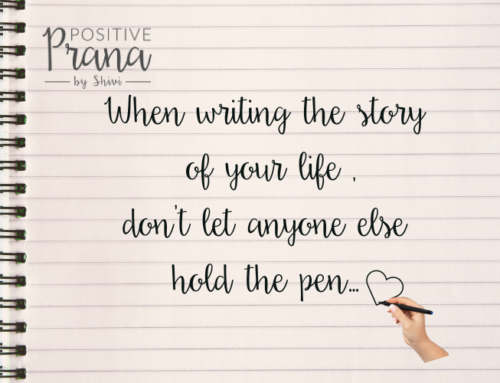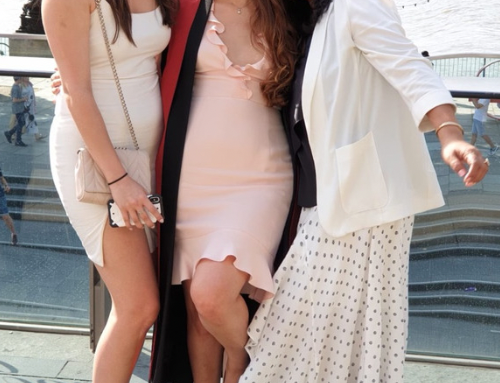Kids who believe they can improve or what we refer to as “have a growth mindset” are apt to see challenges as a natural part of the learning process. They work harder and smarter, helping them to learn and achieve more than students with a fixed mindset.
Students with a growth mindset may display behaviours like:
- Asking the teacher to demonstrate a new way to do a math problem
- Volunteering answers in class even when unsure
- Asking a question even if it might seem basic or “stupid”
- Seeking out problems that will push them instead of problems that keep them safely within their comfort zone
There are obvious advantages to cultivating a growth mindset in children of any age, and it’s never too early to start!
Teachers have a unique opportunity to influence the mindset of the children they interact with on a daily basis, and there are some simple things they can do to encourage a growth mindset over a fixed one. For example, teachers can:
- Set and publicly share teaching goals (e.g., “I am working on giving feedback to every student every period”)
- Reframe deficits as opportunities for growth
- Ask others for better strategies
- Seek mentorship
- Avoid language that implies a fixed mindset about their own abilities (e.g., “I’ve never been great at math”)
- Share their own mistakes with students and vocally embrace each mistake as a chance to get better (Character Lab, n.d.)
Making a verbal commitment to building a growth mindset and offering effort-based praise is a great strategy for helping children to develop a growth mindset, but it’s about more than words. Teachers and parents who want to guide their children toward this mindset should also focus on:
- Improving themselves first; it’s extremely difficult, if not impossible, to build a growth mindset in others if it’s not a mindset you are also embracing for yourself.
- Go beyond the “mindset jargon” and inspirational quotes to truly focus on encouraging growth over achievement, and frame failure as opportunities to learn.
- Praise properly, focusing on their efforts rather than any inherent abilities.
- Embrace the word “yet;” as noted earlier in the section on building your own growth mindset, use the word “yet” with children to give them a sense that failure is not inevitable and that their current level of knowledge or skill is not immutable.
- Take advantage of mistakes children make; be ready to praise them for their efforts but also point out any issues in their approach and brainstorm better ways to handle the situation with them.
- Let kids fail; another vital part of building a growth mindset in children is to let them fail instead of showing them how to do everything. Trial and error is an important learning process, and children should be free to use it (Gerstein, n.d.).
If you think you’ve got a good handle on the general principles, but are looking for more specific and hands-on techniques for cultivating a growth mindset in your children or students, read on
Mindset Activities for Students and Adults
There are many activities and exercises you can try to get yourself or your children or students into more of a growth mindset. Try one of the four activities listed below and see if any of them work for your child, your class, or even yourself!
Crumpled Reminder Activity
This activity from the Project for Education Research that Scales (PERTS) official Mindset Kit will guide children through a lesson on the importance of failing and how we can use failure as an opportunity. It should only take about 15 to 20 minutes.
If you’d like to give this activity a try, follow these steps:
- Ask students to write about a mistake they made this week and how it made them feel.
- Give each student a fresh piece of paper, ask them to crumple it up and throw it at the board with the feelings they have when they make a mistake.
- Ask them to retrieve the paper, un-crumple it, and colour each line with different colours.
- Ask students what they think those lines represent. Explain that the lines represent all the synaptic activity (or brain activity, for younger children) that happens when a mistake is made.
- Ask students to keep the paper and stick it into a notebook or folder to look at when they make a mistake. This physical reminder prompts students to use mistakes to strengthen their brains every time they open their notebooks.
- OPTIONAL – Lead a discussion on mistakes using questions from the Classroom Discussion activity (below) to further students’ understanding about the value of mistakes.
Click here to learn more about this activity.
Classroom Discussion Activity
You can use this to complement the first activity or on its own—either way, it will teach kids a valuable lesson about failure.
Introduce the activity by saying you are going to talk about why mistakes are good, and how you can learn from them. Lead a discussion on mistakes, starting with the following questions:
- How do you feel when you make a mistake? Why?
- How do you think other people see you when you make a mistake?
- Have you ever discovered something new from making a mistake?
- Have you ever felt proud of making a mistake?
- Has a mistake ever made you think more deeply about a problem? (With this question, you can start off with a non-academic situation, then apply the lesson to school.)
If you’d like to learn more about this activity, visit PERTS’ website here.
Mistake Game
This exercise from Barbara on the Mindset Kit website is a perfect way for students to get comfortable learning about, making, and keeping an eye out for mistakes.
Begin by assigning students a set of math problems. Each student must complete them individually.
Once each student has finished their set, put the students into small groups (four or five students per group) and assign each group one of the problems to present to the class. The group members should share their individual solutions with the group, then collectively they can choose a solution to share with the class on the whiteboard.
However, there’s a catch—they must make at least one intentional mistake in their solution! The group can choose a mistake made by one of their own members or come up with a new mistake, but there must be at least one mistake present.
When each group has settled on a solution with at least one mistake, the groups will present their solution to the class one at a time. While they present, the class must listen to their process and keep their eyes peeled for the mistake(s). When they believe they’ve found a mistake, they have to phrase it in the form of a question (e.g., “Why did you do it that way?” or “Can you explain how you did that part?”).
This process of sharing and openly discussing mistakes can help diminish the stigma of making errors. It also encourages students to ask thoughtful questions and to be comfortable talking about their own mistakes.
Click here to read about this activity from the source.
Reflection on Mistakes
This is a great activity to use with an individual student or child who has just made a mistake that he or she feels particularly bad about. Remind the child that mistakes an inevitable part of life, and that they can be used as an opportunity to grow and improve.
Encourage them to answer these questions in their journal, diary, or on a sheet of paper:
- What happened when you made the mistake?
- How did you realize you had the wrong answer?
- Describe how you started thinking about the problem.
- How did it feel when you realized you made a mistake?
- What did you learn from making this mistake?
Once they have answered these questions, discuss the mistake with them. Praise them for their effort, acknowledge that they have made progress by completing this reflection, and encourage them to try new strategies in the future.
You can click here to learn about the activity this exercise is based on.
Challenge Your Fixed Mindset Voice
This activity involves four steps that are not all that easy, but that can help you to develop the foundation for a lasting growth mindset.
Step 1: Learn to hear your fixed mindset voice.
Pay attention to the voice that pops up when you face a new or particularly daunting challenge. This is the voice of your fixed mindset, and it likely only has negative things to say about you and your abilities. It might say something like “You really think you can do it?” or “This is not one of your strengths, just give up and do something else!”
Once you’ve identified the voice, move on to the next step.
Step 2: Recognize that you have a choice.
After realizing that you have a fixed mindset voice and that it’s not necessarily your authentic voice, you will realize that you have a choice in whether to listen to this voice or not. It is up to you to decide how you want to interpret and respond to challenges, setbacks, criticism, and failure.
Tell yourself that you have a choice, and do your best to believe it!
Step 3: Talk back to it with your growth mindset voice.
When the fixed mindset voice comes nagging at you, start to talk back to it. Question it, throw doubt on its conclusions, and generally counter it wherever you can.
It may say, “Are you sure you can do it? Maybe you don’t have what it takes.”
You can respond, “I’m not sure I can do it now, but I think I can learn to do it with time and effort.”
If it says, “What if you fail—you’ll be a failure!”, respond with “Most successful people had failures along the way.”
When you hit an inevitable setback at some point, it might say, “This would be so much easier if you only had the talent.” If it does, respond with “That’s wrong. Even those with the greatest inherent talent need to work hard to succeed in their field.”
Do whatever you can to challenge that fixed mindset voice and encourage the growth mindset voice.
Step 4: Take the growth mindset action.
Finally, once you have tons of practice challenging the fixed mindset voice with your growth mindset voice, it will become easier to take the growth mindset action.
Taking the growth mindset action means:
- Taking on the challenge wholeheartedly.
- Learning from your setbacks and trying again.
- Hearing the criticism and taking constructive action.
Continue listening to both voices and acting on the growth mindset voice as often as possible, and you will have an excellent foundation for the right mindset.









Leave A Comment